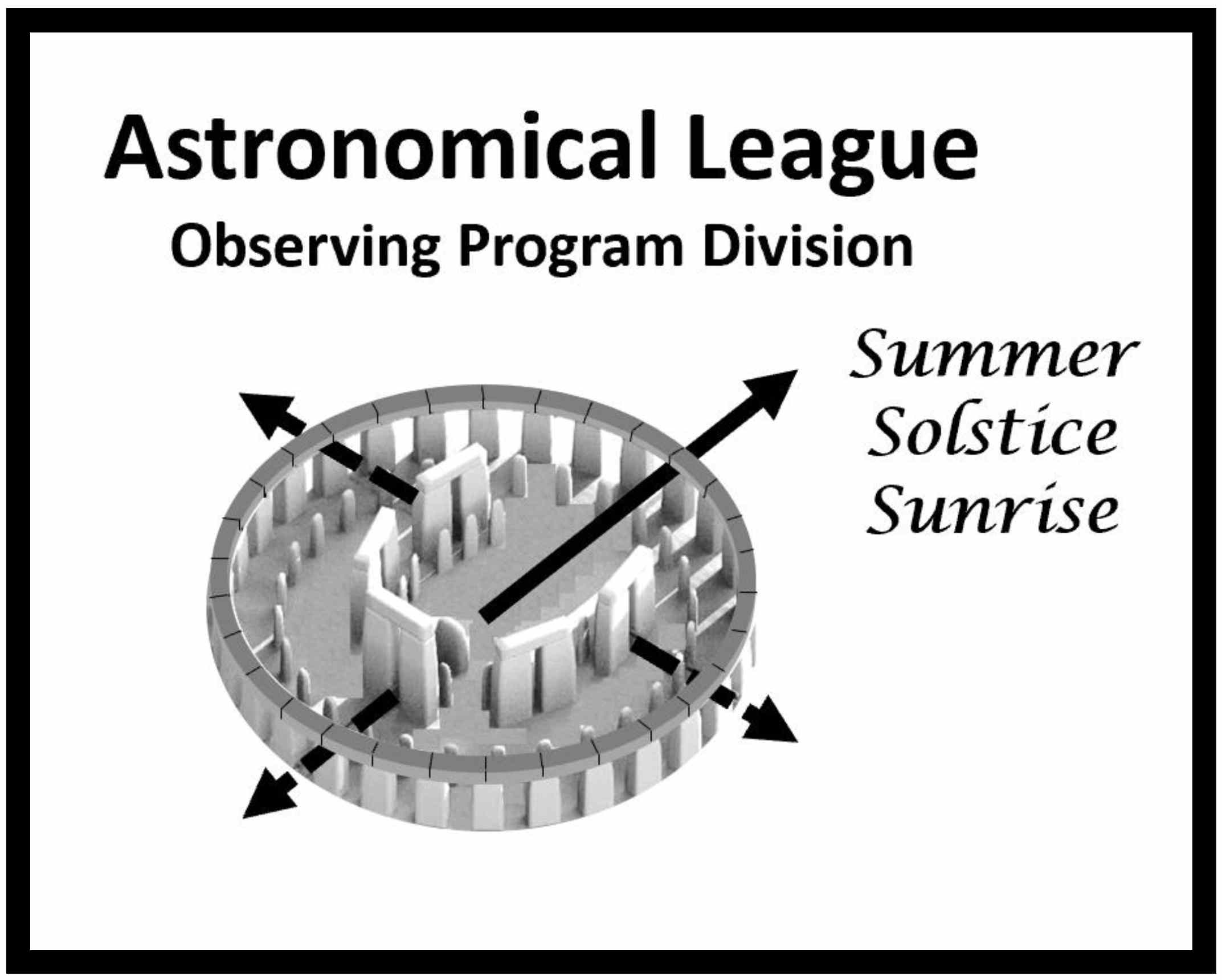Introduction
| Like any activity, astronomy has many different terms that are used by amateur astronomers. It is helpful if we all have a common understanding of what these terms mean. This is some of that information in use for Astronomical League Observing Programs, we hope it is useful. |  |
Highest Level of an Observing Program or Award:
This refers to the highest level of achievement in an Observing Program or Award. This is the level required for the Master Observer Progression. It may have different names. For example:
- Radio Observing Program: Gold (of Bronze, Silver and Gold)
- NEO Observing Program: Advanced (of Intermediate and Advanced)
- Flat Galaxies Observing Program: Honorary (of Regular and Honorary)
- Galaxy Groups and Clusters Observing Program: Complete (of Partial and Complete)
- Meteor Observing Program: 36 hours
- Outreach Observing Award: Master (of Outreach, Stellar, and Master)
“Manual” Observations:
Some of our Observing Programs require the observer to do their observations manually (no Go-To or Remote Telescopes can be used).
“Go-To” Telescope:
A Go-To Telescope is defined by the Astronomical League as any telescope or device that aids the user in pointing the telescope to locate an object. This includes computer controlled telescopes, telescopes with setting circles that either electronically or manually indicate the Right Ascension and Declination where the telescope is pointing, and any other device (computer, tablet or phone, etc.) that is used at the telescope to either point the telescope or indicate where the telescope is pointing. If an Observing Program does NOT allow the use of Go-To Telescopes, you are allowed to use star charts, in paper form or electronic form, as sources of information to aid you in star-hopping or with similar techniques. You may use powered mounts, as long as you meet the other requirements.
“Remote” Telescopes:
Remote Telescopes, as defined for Astronomical League Observing Programs, are Go-To Telescopes where the observer is not responsible for maintenance and operation of the telescope. A telescope which belongs to the observer, regardless of its location, is not considered a Remote Telescope. If an Astronomical League Observing Program allows the use of a Remote Telescope, the member must be submitting a request for an image, and the image must be done specifically for that member. The submitter must be setting exposure times and requesting specific filters as needed. This would include telescopes where you “buy” time and control the telescope during that time slot, and also includes telescopes where you request a specific image be taken for you, but the telescope operators control the timing to optimize telescope use.
Electro-Enhanced Telescopes (ET):
These telescopes are electronically enhanced telescopes. These telescopes are designed to fully automate astronomy. They usually can be set up, turned on, and then controlled from a phone/computer. They find objects, do plate solving to ensure that they are in the right place, and then take images, stack them, and deliver them to your phone/computer. Even if the telescope has a feature resembling an eyepiece, they are usually miniature screens. These telescopes are considered a form of imaging and are only acceptable for Observing Programs that allow imaging. They are NOT considered Remote Telescopes since they are operated directly by the observer.
Binocular Telescopes vs. Binoculars:
Many of the AL Observing Programs are binocular programs. Others are telescope programs. How do Binocular Telescopes fit in? What about “Bino-Viewers”?
The Astronomical League defines a binocular telescope as an observing device with two optical tubes and two eyepieces, where the eyepieces can be replaced with eyepieces of different focal lengths. “Bino-Viewers” have a single optical tube, but two eyepieces. “Bino-Viewers” and Binocular Telescopes may be used in any Observing Programs that are telescope based. They may not be used in binocular programs.
Observing devices with two optical tubes and two eyepieces, where you cannot change the eyepieces, are binoculars. Binoculars may be used in any Observing Program requiring telescopes or binoculars. Most binoculars do not have sufficient magnification to replace telescopes.
Night-Vision (NV) Eyepieces and Devices:
A Night Vision Eyepiece is any device that uses technology to electronically enhance the view in real-time. This is often done by intensification, which especially enhances the reds and near infrared parts of the spectrum. Many of our observing Programs allow the use of these devices. If the device takes images or is used in the optical path for imaging, then it is considered imaging, and is only acceptable when an Observing Program allows imaging.
Seeing:
This is an informal measure of how stable the skies are during an observing session. Any scale may be used, but a simple standard one is suggested here.
Transparency:
This is a measure of how clear the skies are during an observing session. Any scale may be used, but a simple standard one is suggested here.
Locate vs. Identify vs. Observe:
These observing programs are for observing. Sometimes this is done by taking images and sometimes it is with your eye to an eyepiece. All of these terms are used throughout the Astronomical League web pages, so it is important to understand the difference:
- Locate – this means “to find” something. This is the first step in the observing process. But simply locating an object does not count as an observation.
- Identify – this means to determine which object in an eyepiece view or in an image is the object you are observing.
- Observe – this means “noting detail” of your object. This means you take an image, make a sketch, or describe details that you can see through the eyepiece. Simply locating an object does not usually meet the requirements for the Observing Programs.



